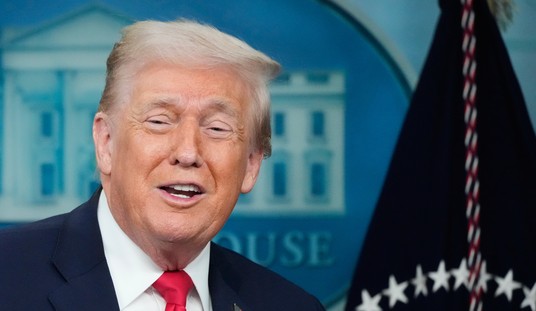By “grossly underrepresented,” I mean a mismatch in which the share of the total population that identifies with a certain religious group exceeds the share of Congress that identifies that way by at least five percent. Many religious groups, starting with Christians, are overrepresented in the federal legislature. A couple, Pentecostals and nondenominational Protestants, are notably underrepresented but not quite by five percent.
Only one group reaches that five-percent threshold — and then blows past it, producing a mismatch of nearly 23 percent.
If you’re a longstanding reader of the site, you already know what it is. New from Pew:

It’s down there by the bottom. Nearly a quarter of the U.S. population now considers itself unaffiliated with any religious sect and yet among 535 senators and representatives in Congress, just one — Kyrsten Sinema, the new senator from Arizona — places herself among them. Sinema was also the only unaffiliated member of the last Congress. By moving from the lower chamber to the upper one, she’s left “the people’s House” completely devoid of unaffiliateds.
Or rather, of admitted unaffiliateds.
Lotta footnotes here. One obvious one is that membership in Congress skews older while identification as “unaffiliated” skews younger, so a mismatch may be inevitable. It’s no coincidence, I think, that Sinema is just 42 years old, among the Senate’s youngest members. If you want a less religious Congress, you need a younger Congress. Another problem is that “unaffiliated” is an umbrella term that covers all manner of people — atheist, agnostic but “spiritual,” theistic but disinclined towards religious rituals, etc etc. Unaffiliateds really aren’t a group, rather a label for a mass of people who are ambivalent about groups for their own idiosyncratic reasons. You’d need to parse those idiosyncrasies finely for a truly representative Congress.
The big footnote, though, is that Pew can only track what members of Congress are willing to admit to. Sinema’s the lone person on the Hill with a vote who’ll cop to being unaffiliated, but look again at the table above. Fully 15 percent of Congress calls itself Christian but without any specific affiliation. Another 3.4 percent either refused to answer or said “don’t know.” Not everyone in that combined in 18.4 percent is harboring the secret that they’re religiously unaffiliated but afraid to admit it lest some religious voters hold it against them, but surely some are. And in a group of 535 people, there are bound to be some who claim affiliation with a particular sect but do little to actually practice their religion. That is, if we’re treating “unaffiliated” as a proxy term for “not very religious,” it’s impossible to say from this data how well Congress represents the broader public. If we could quantify the number of not-very-religious reps, would you bet against 23 percent?
Take five minutes and eyeball the rest of the fascinating data in Pew’s new story about this. I knew Republicans in Congress were overwhelmingly Christian but I didn’t how much — 99.2 percent(!). Two Jewish Republicans in the House are the extent of religious diversity within the GOP on the Hill. Democrats have 61 members of non-Christian affiliations in the House and Senate, although Christians are overrepresented in their caucus too — 78.3 percent compared to 71 in the overall population. What’s really interesting, though, is the graph near the end showing how different religious affiliations in Congress have grown or shrunk since the 1960s. Contra expectations, the shares of Christians and non-Christians haven’t changed much since the late 1980s. What’s changed is a small but steady increase in the number of Catholics relative to the number of Protestants. Year after year, there are between 450 and 470 Christians in Congress but since the early ’80s that’s moved from a roughly three-to-one ratio favoring Protestants over Catholics to something more like two-to-one (or less). I assume that’s partly a function of changing racial demographics in Congress, with more Latino members now than in the past, but Pew doesn’t offer racial data here.
Exit question: Will Sinema’s success in a purple state encourage more secret “unaffiliateds” in Congress to come out of the closet?









Join the conversation as a VIP Member